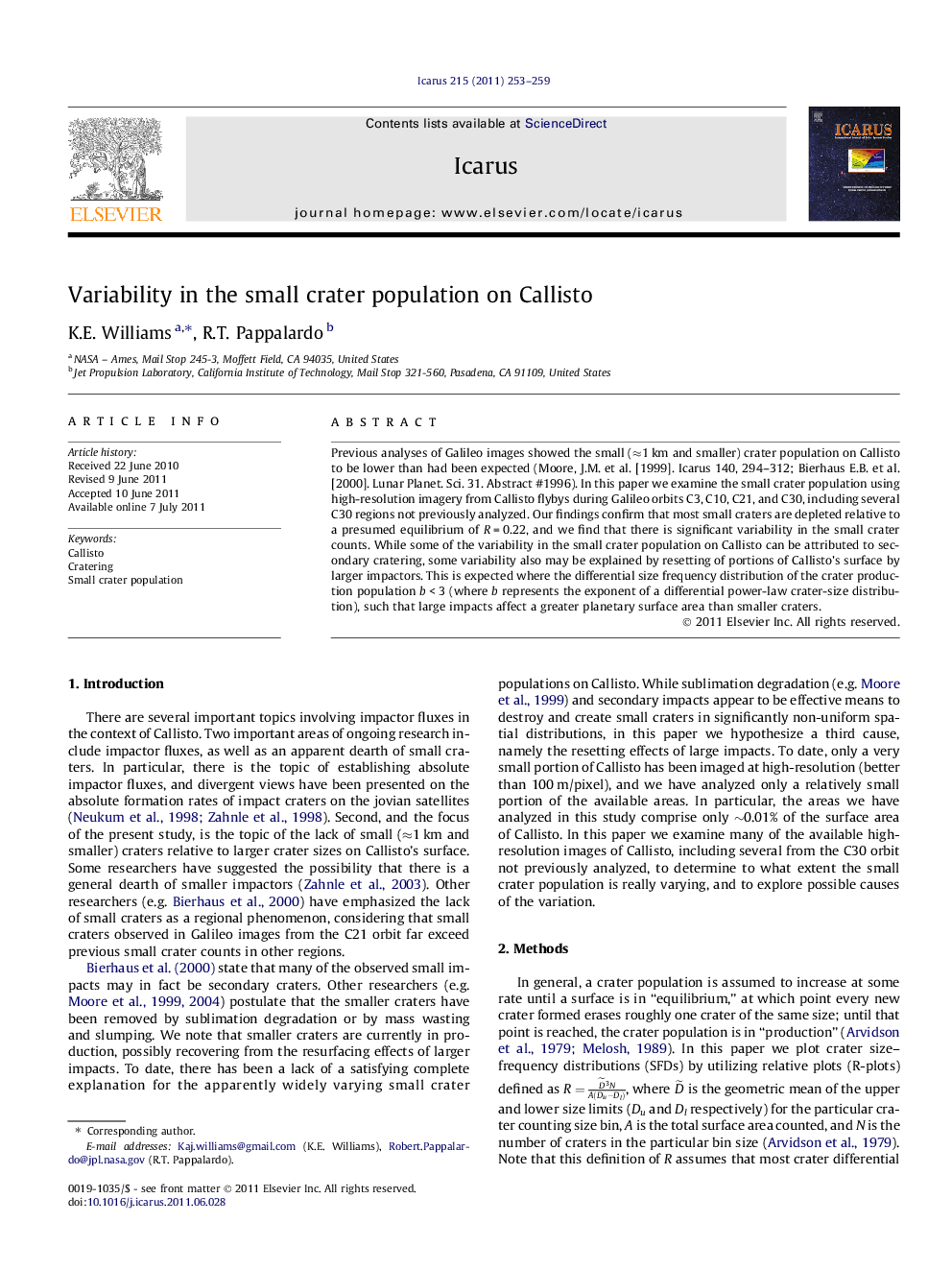| Article ID | Journal | Published Year | Pages | File Type |
|---|---|---|---|---|
| 1773982 | Icarus | 2011 | 7 Pages |
Previous analyses of Galileo images showed the small (≈1 km and smaller) crater population on Callisto to be lower than had been expected (Moore, J.M. et al. [1999]. Icarus 140, 294–312; Bierhaus E.B. et al. [2000]. Lunar Planet. Sci. 31. Abstract #1996). In this paper we examine the small crater population using high-resolution imagery from Callisto flybys during Galileo orbits C3, C10, C21, and C30, including several C30 regions not previously analyzed. Our findings confirm that most small craters are depleted relative to a presumed equilibrium of R = 0.22, and we find that there is significant variability in the small crater counts. While some of the variability in the small crater population on Callisto can be attributed to secondary cratering, some variability also may be explained by resetting of portions of Callisto’s surface by larger impactors. This is expected where the differential size frequency distribution of the crater production population b < 3 (where b represents the exponent of a differential power-law crater-size distribution), such that large impacts affect a greater planetary surface area than smaller craters.
► Previous cratering studies of Callisto show a depleted small crater population. ► We find, however, variability in the small crater population of Callisto. ► Some variability may be explained by both secondary cratering and resetting.
